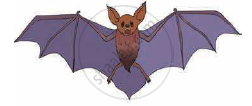Advertisements
Advertisements
प्रश्न
Match items of column (A) with items of column (B)
| (A) | (B) | ||
| (a) | Pore bearing animals | (A) | Arthropoda |
| (b) | Diploblastic | (B) | Coelenterata |
| (c) | Metameric segmentation | (C) | Porifera |
| (d) | Jointed legs | (D) | Echinodermata |
| (e) | Soft bodied animals | (E) | Mollusca |
| (f) | Spiny skinned animals | (F) | Annelida |
उत्तर
| (A) | (B) | ||
| (a) | Pore bearing animals | (C) | Porifera |
| (b) | Diploblastic | (B) | Coelenterata |
| (c) | Metameric segmentation | (F) | Annelida |
| (d) | Jointed legs | (A) | Arthropoda |
| (e) | Soft bodied animals | (E) | Mollusca |
| (f) | Spiny skinned animals | (D) | Echinodermata |
APPEARS IN
संबंधित प्रश्न
Identify me.
My body is radially symmetrical. Water vascular system is present in my body. I am referred as fish though I am not. What is my name?
Identify the class of the animal shown in the figure and write any two characteristics.
Find an odd one out.
Locomotion of starfish takes place through pseudopodia.
What are the locomotory organs of the animal given in the picture?

Name the phylum in which earthworm and starfish belongs to.
The locomotory organs of Echinodermata are
The locomotion of phylum Echinodermata is affected by ______.
Which of the following animal does not belong to Phylum Echinodermata?
Cockroach, Frog, Sparrow, Starfish, from these animals which can regenerate its broken body part?
